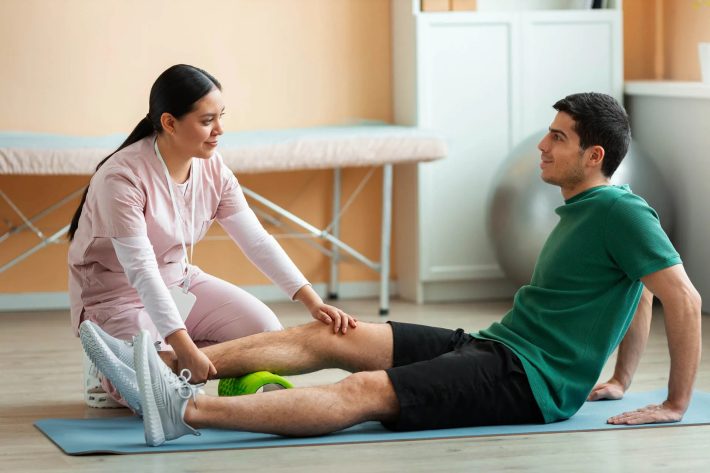
We all know that pushing our bodies to the limit is part of the game, but unfortunately, that sometimes means injuries happen. But here’s the good news: getting back on the field, court, or track doesn’t just rely on talent or how determined you are. A huge part of a successful return is effective rehabilitation. This is where physiotherapy comes in.
What is Sports Injury Rehabilitation?
Sports injury rehabilitation is a specialised approach to getting your body moving and working properly again after an injury. It’s much more than just making the pain go away; it looks at why the injury happened and works to boost your performance to help stop it from happening again. Choosing the right Dianella sports physio specialist makes a huge difference.
Doing this well takes careful decisions and a step-by-step plan. The main goal? To help you get back to your sport as quickly and safely as you can. That’s exactly what sports physio Morley professionals are trained to do.
The Various Phases of Recovery Explained:
Rehabilitation usually follows a few key steps. This is typically how recovery happens.
Phase I: Immediate Rehabilitation
Right after the injury, the focus is on protecting the injured spot, easing pain and swelling, getting back some initial movement within limits, and stopping muscles from shutting down.
What therapists do: They might use techniques and tools like electrical stimulation, gentle hands-on therapy to help your joints, and very light exercises. You’ll also likely do exercises for areas that aren’t hurt to keep your fitness up.
Phase II: Intermediate Rehabilitation
Now, you’re working to get your full range of motion back and starting to build strength in the injured area. Muscle size might also start to increase. You keep up the fitness training.
What therapists do: They might continue using modalities or hands-on therapy if needed. You’ll do more active exercises and start getting stronger. You might also do interval training for fitness.
Phase III: Advanced Rehabilitation
This phase is about getting significantly stronger and starting to work on power. You’ll also continue building endurance and begin practicing movements that are specific to your sport.
What therapists do: Exercises now involve higher weights, possibly including exercises where your foot or hand is moving freely. You’ll work on balance and coordination more, and start doing some exercises that involve jumping or quick movements. Fitness training will become more intense.
Phase IV: Return to Function
You’re pushing to get back to your full level of activity. This means boosting strength and power even more, and practicing skills and movements exactly as you would in a game, at full speed. It’s also about making sure you don’t get hurt again.
What therapists do: Exercises use maximum loads for strength and power. You’ll do advanced plyometrics and exercises for both muscle and heart/lung endurance. You’ll work with your coaching team on specific sport skills. Testing helps make sure you’re ready to go back.
Tailoring the Approach:
Before starting any program, a key first step is understanding exactly what you need.
- Sport Analysis: Therapists look at the physical demands and movements of your sport. They also look at the energy systems you use and common injuries in that sport.
- Athlete Assessment: They check your strengths, weaknesses, training history, and past injuries. They also look at your physical abilities.
- Functional Assessment: This includes asking you how you’re doing, checking specific problems, and testing how well you can perform physical tasks.
Why it matters: This analysis makes sure your program is built to improve the specific things you need, like strength, flexibility, power, endurance, and speed. It sets you up for success and helps prevent getting hurt again.
If you are looking for a sports physio near me, getting a tailored plan from a trusted sports physio Morley clinic ensures your rehab is built around you.
Collaboration is Key
Your sports physiotherapy expert is crucial for assessing your injury, making decisions, and running your program. But great care involves everyone involved in your well-being working together, like athletic trainers, strength coaches, and sports psychologists. When everyone communicates and works as a team, it helps you get back safely and quickly.
Getting Back Stronger than Ever:
The goal is often not just getting back, but coming back just as strong or even better than before.
The detailed assessment helps find any weak spots or imbalances that can be improved to boost your overall performance. As you get closer to returning, you’ll work on training that matches the intensity of your sport.
It’s also important to include exercises and strategies in your rehab plan that help prevent getting hurt again. Your sports physio in Beechboro will use testing to make sure you are physically and mentally ready.
Your Partner in Recovery
Getting back to your sport after an injury is a journey with different steps. Having expert physiotherapy care is absolutely necessary to guide you safely and successfully through this process. Talk to our sports physiotherapist today if you have any questions.
